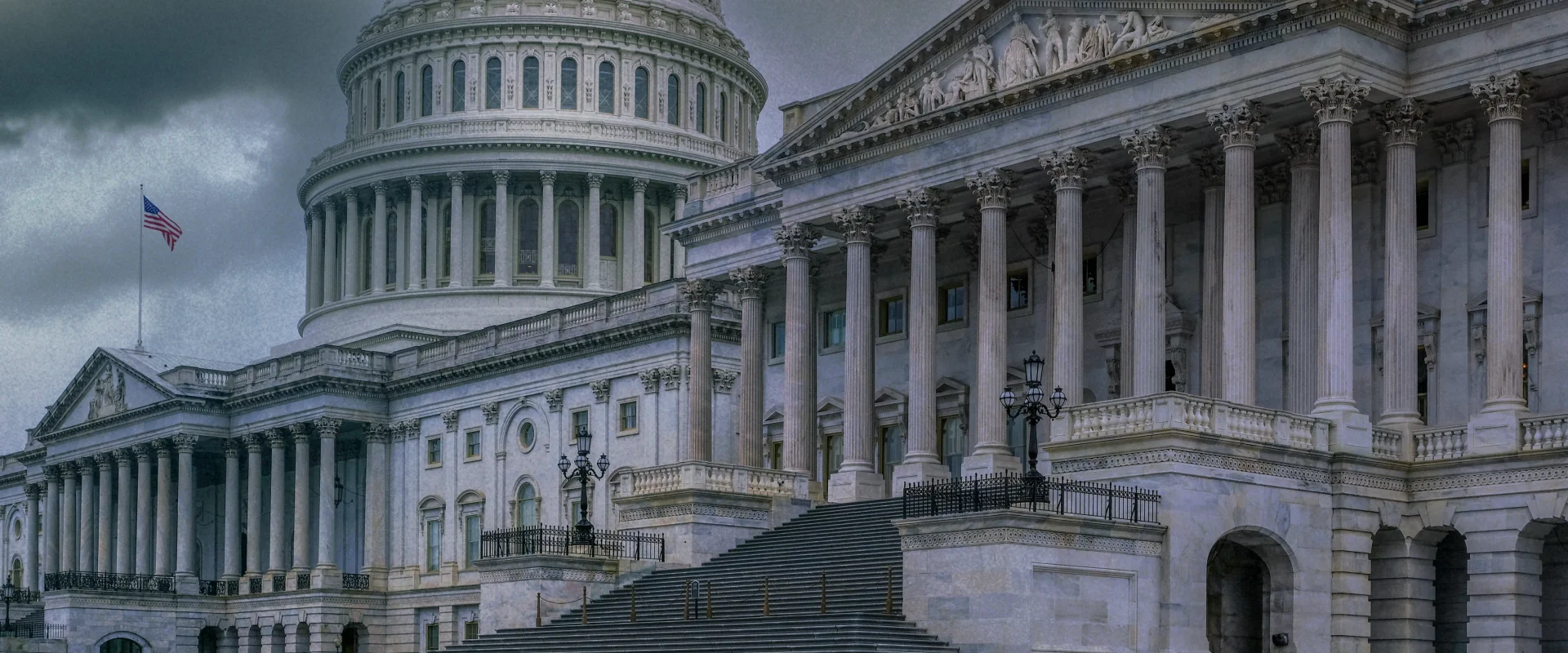
04-24-2025
At a recent Economic and Business Insights for Tomorrow roundtable, Purdue business undergrads brought their questions to Daniels School Distinguished Fellow Doug Holtz-Eakin, founder and president of the American Action Forum.
Holtz-Eakin outlined critical challenges facing the U.S. economy, emphasizing underappreciated risks, structural fiscal imbalances and the urgent need for politically viable reforms. His insights reveal a nation at a crossroads, grappling with debt, entitlement sustainability, and policy missteps that threaten long-term growth.
The Economic and Business Insights for Tomorrow sessions are small group discussions organized by the Daniels School's dean's office and are designed to generate thought-provoking conversations among students and leaders.
Holtz-Eakin identifies the federal budget and debt as the most underappreciated long-term risk to the U.S. economy. The debt-to-GDP ratio — now at 122% — reflects decades of political inertia. Unlike the 20th century, when crises like WWII spurred fiscal discipline, 21st-century policymakers have allowed debt to balloon without post-crisis repayment plans. This structural mismatch between revenue growth (~4% annually) and entitlement spending (5.5–7.5% annual growth) creates an unsustainable trajectory.
Key drivers include Social Security and Medicare, which consume 55% of federal spending and grow faster than GDP. The Social Security trust fund faces exhaustion by 2033, threatening a 21% benefits cut unless reforms occur. Interest costs are also a looming threat. Over the next decade, $14 trillion of the projected $90 trillion in federal spending will go toward debt service — a figure set to balloon as rates rise.
Holtz-Eakin argues that Social Security and Medicare reforms are inevitable within the next decade. Retirees will demand clarity on benefits, forcing Congress to act. Potential solutions include:
Holtz-Eakin noted that the political resistance to restructuring from the left comes from concern that Social Security would then be perceived as a poverty program, making that social safety net unpopular. Past efforts to replace and privatize the program received no votes from the right.
Medicare’s challenges are more complex due to systemic healthcare cost growth. Holtz-Eakin stresses that market-driven innovation — not government micromanagement — is key to reducing costs. Private-sector advancements in AI-driven diagnostics and biologics could lower expenses, but monopolistic practices and regulatory silos (e.g., Part A/B/C/D payment silos) stifle competition.
Holtz-Eakin warns that the current presidential administration’s proposed tariffs — a $400 billion tax increase — pose an acute threat to the economy. The lack of clear outcomes and constant changes to the remaining tariffs risk triggering a recession by disrupting global trade and supply chains. This would force the Federal Reserve into a precarious position: cutting rates to support growth while inflation expectations remain elevated (e.g., Michigan surveys show 1-year expectations at 6.7%, the highest since 1981).
A stagflationary environment — marked by stagnant growth and rising prices — would leave the Fed with no good options. Rate cuts to avert recession could further destabilize inflation expectations, while inaction risks deepening economic pain.
When Holtz-Eakin first heard about DOGE, he was impressed by the potential of a group outside the government promising to rethink things and provide performance insights. Instead, it’s been “slash and burn at random.” Most of its cuts have been to the area of budget that Holtz-Eakins sees as key to U.S. growth — discretionary spending.
He believes they have misplaced their focus. Discretionary spending accounts for just 21% of the budget. Even eliminating half of federal personnel costs ($200 billion/year) would barely dent the $1.8 trillion deficit.
He notes that the strategy may be to challenge the 1974 Budget Act in court to see if the executive branch could impound funds Congressionally approved for spending.
DOGE’s approach treats features as bugs when it ignores the political necessity of programs that serve veterans and minorities. These are intentional policy choices — not inefficiencies.
For Holtz-Eakin, the strength of the U.S. is that we "invent things and grow things. It’s what we’re good at. And we invent things by supporting research and science.” The money for research and science comes out of the discretionary budget, which is why he believes we need to protect that area of the national budget.
“If you can deliver genuinely observably high-quality healthcare cheaply, you are going to own the world. Period," says Holtz-Eakin. "It's every budget problem — state Medicaid budgets, federal Medicare problems. It's every private sector employer’s headache. We have never dealt with the cost problem. We've dealt with the coverage problem again and again. The fundamental issue is we don't know what's in the cost."
Healthcare costs represent 20% of U.S. GDP, with Medicare alone growing at 7.5% annually. Holtz-Eakin attributes this to a lack of price transparency (e.g., $15,000 vs. $40,000 hips with no clear justification), fragmented regulation (e.g., nurses unable to work across state lines), and third-party payment systems that insulate consumers from costs.
He advocates for deregulation to foster competition and AI-driven efficiency gains. However, he believes that disruptive innovation will come from the private sector, as government programs like CMMI (Center for Medicare & Medicaid Innovation) lack agility.
Holtz-Eakin says the U.S. must confront its fiscal reality with bipartisan reforms to social security, healthcare and trade policy. Without action, debt will erode growth, leaving future generations with a diminished standard of living. As he starkly notes, “We’ve spent the 21st century testing how much debt the economy can bear. It’s time to stop experimenting.”
The clock is ticking.